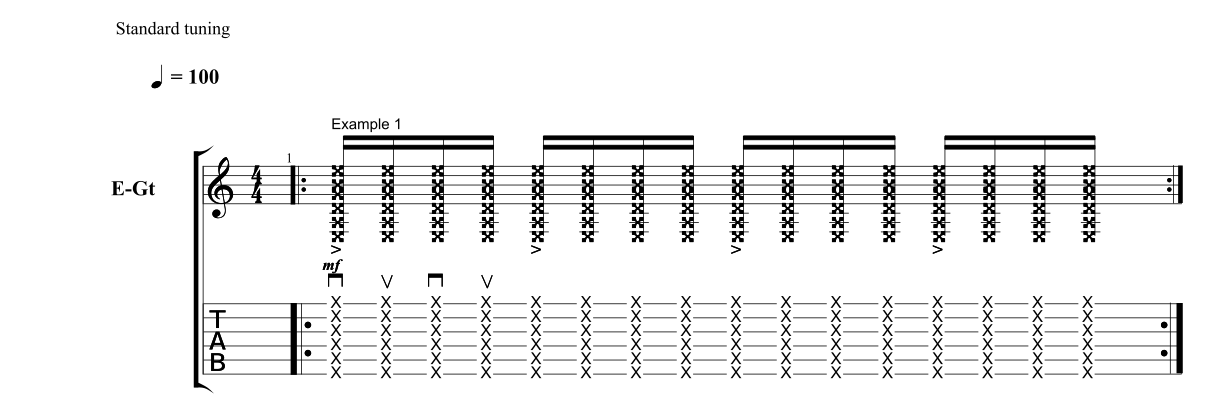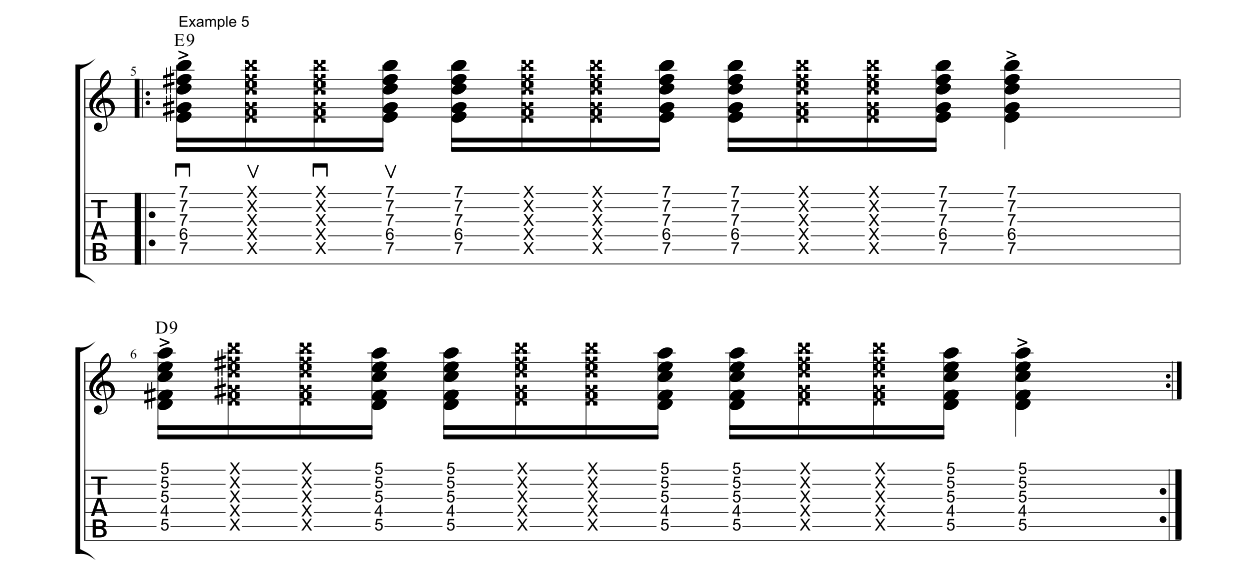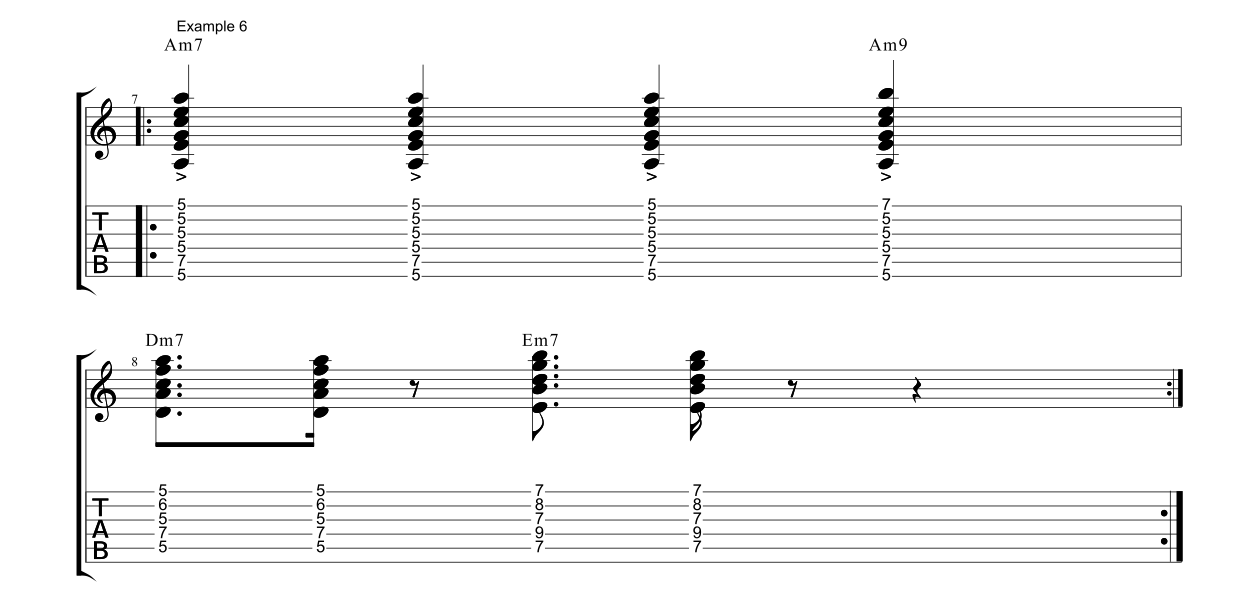Accenting In Funk Guitar
Brought to you by Simon Pratt
I often find that there can be a lack of dynamic range in the playing of modern guitar players. By that I mean, we now live in a musical era that believes in “the louder the better”. Having subtle variations between quieter passages and louder phrases, using accenting, allows you to draw the listener in or make a statement, simply by changing how you pick or strum the notes.
This one simple technique can add variety to your playing and is something you can actually practice without a guitar, although air strumming in public may look a touch strange!
The first four examples use muted 1/16th notes. Make sure when you have your fretting hand on the guitar you lay your fingers across multiple frets to avoid unwanted harmonics coming through.
Accenting Example one
Example one puts the accent on beats 1, 2, 3, and 4. These will all be using down strokes. Remember to keep your strumming alternate and always start with a down stroke on the beat. 
Accenting Example two
Example two accents the E’s of each beat. 1E+a, 2E+a, 3E+a, 4E+a. These will be using up strokes. Often people find it far more difficult to accent using an up stroke, as we associate the main beats of the bar as needing accenting. As always, start slowly!

Accenting Example three
Example three accents the +’s of each beat. 1e+a, 2e+a, 3e+a, 4e+a. By now, you will see that these examples are getting you used to accenting different 1/16th notes in each beat.

Accenting Example four
Example four accents the A’s. 1e+A, 2e+A, 3e+A, 4e+A.

Accenting Example five
This example uses the dominant 9th chord, and pays homage to its owner; the soulful funk pioneer James Brown. Moving from E9 in bar one, back to D9 in bar two, watch out for the accents in beats one and four.

Accenting Example six
A distinct flavour of early Nile Rodgers here. Large accented minor 7th chords and adding in the minor 9th with the little finger for that extra funky sound. The difference between the big accented ¼ notes in bar one, and the more subtle chords in bar two, shows you a way of using this technique, almost a call and response.

Accenting Example seven
Octaves are a fantastic addition to your rhythm-playing arsenal. The three accented and staccato octaves in bar one really stick out, with the second bar introducing a quieter muted phrase.

Accenting Example eight
Another Nile Rodgers example pops up again here. The mixture of single notes and triads, plus the ability to add accents makes for a really sophisticated rhythm part.

Although in this lesson we have concentrated on accenting rhythms in funk music, this technique is useful in every genre. Try accenting certain power chords in a rock piece, or hitting specific notes in a blues solo, to accentuate the wide dynamic range we have available to us.
Lesson by Simon Pratt
“The artists you work with, and the quality of your work speaks for itself.”
Tommy Emmanuel
© Copyright Fundamental Changes Ltd 2025
No.6 The Pound, Ampney Crucis, England, GL7 5SA
